Introduction
The Normandie was the first ship to exceed 1000 feet in length and at the time was the largest and fastest ship afloat.
She was built by the French Line at St. Nazaire and was completed on 29 October 1932, three years after the Wall Street Crash. 200,000 people witnessed her launch into the Loire River.
Madame Marguerite Lebrun, wife of the French President Albert Lebrun, christened the ship with champagne.
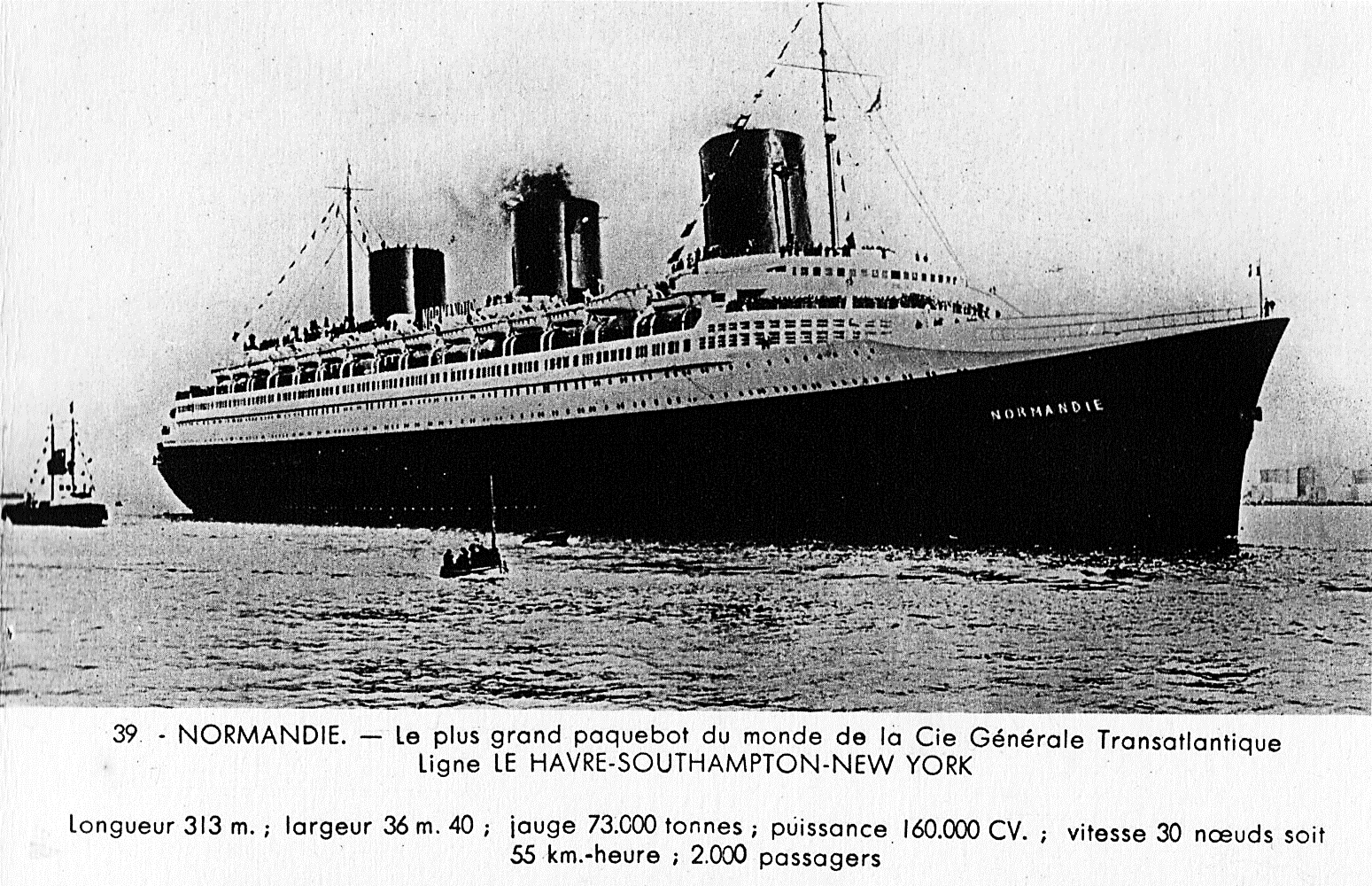
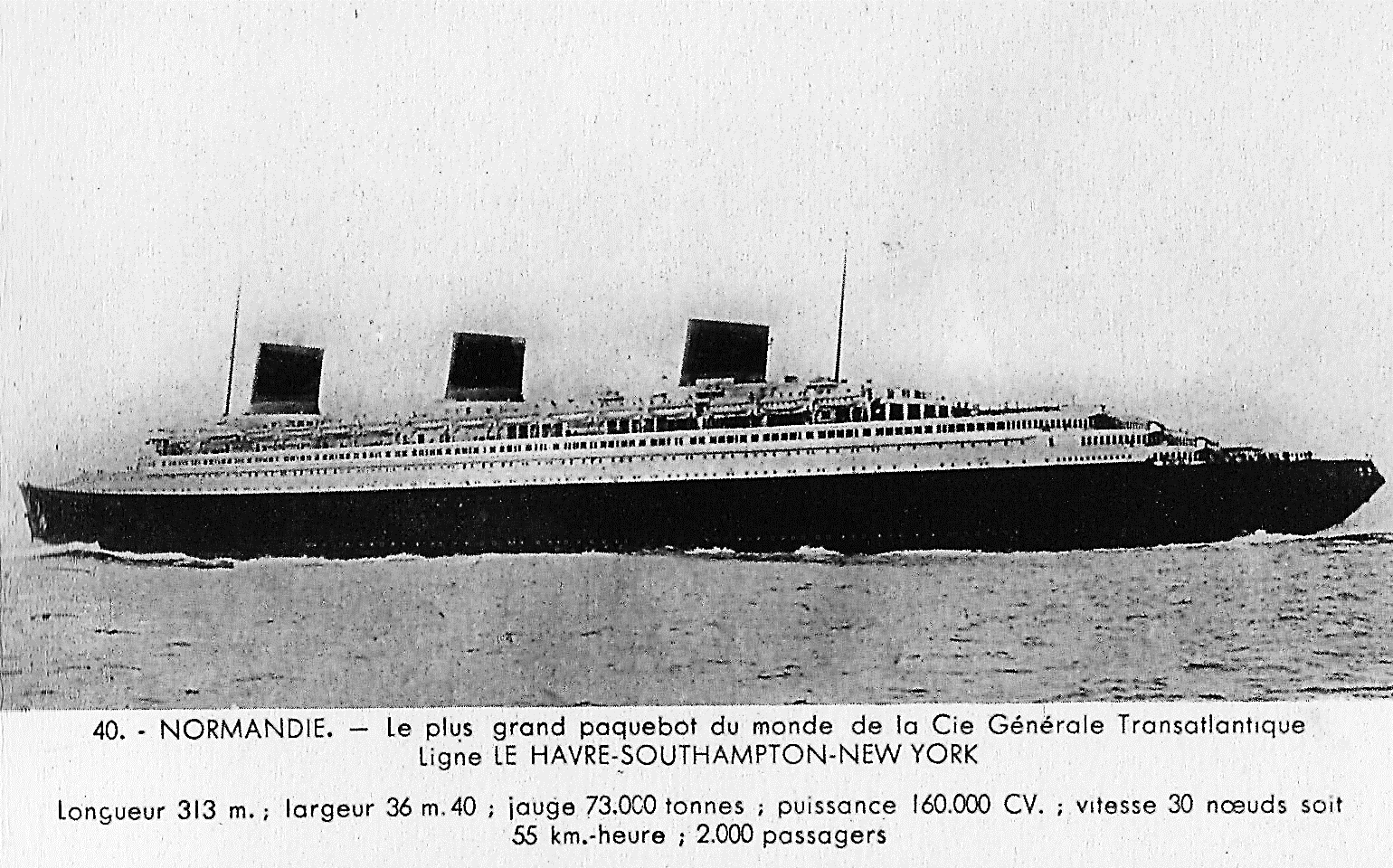
Her designers, including Vladimir Yourkevitch, wanted to make her extremely hydrodynamic so they devised a slanting clipper-like bow, a bulbous forefoot beneath the waterline and a slim hull.
When sailing, she produced little bow wave and only left a thin flat wake behind her so that small boats sailing near the ship suffered little from her ripple waves. Previously, the swash generated by huge propellers of the larger liners would toss smaller vessels about.
The Normandie changed this, much to the pleasure of local fishermen.
Each of her three funnels were slightly smaller than the other which added to her dynamics compared to other liners.
Her maiden voyage was originally scheduled for 1934, but was delayed until May 1935, partially in response to the rapid decline in passenger traffic after the Wall Street Crash and the economic crisis which followed.
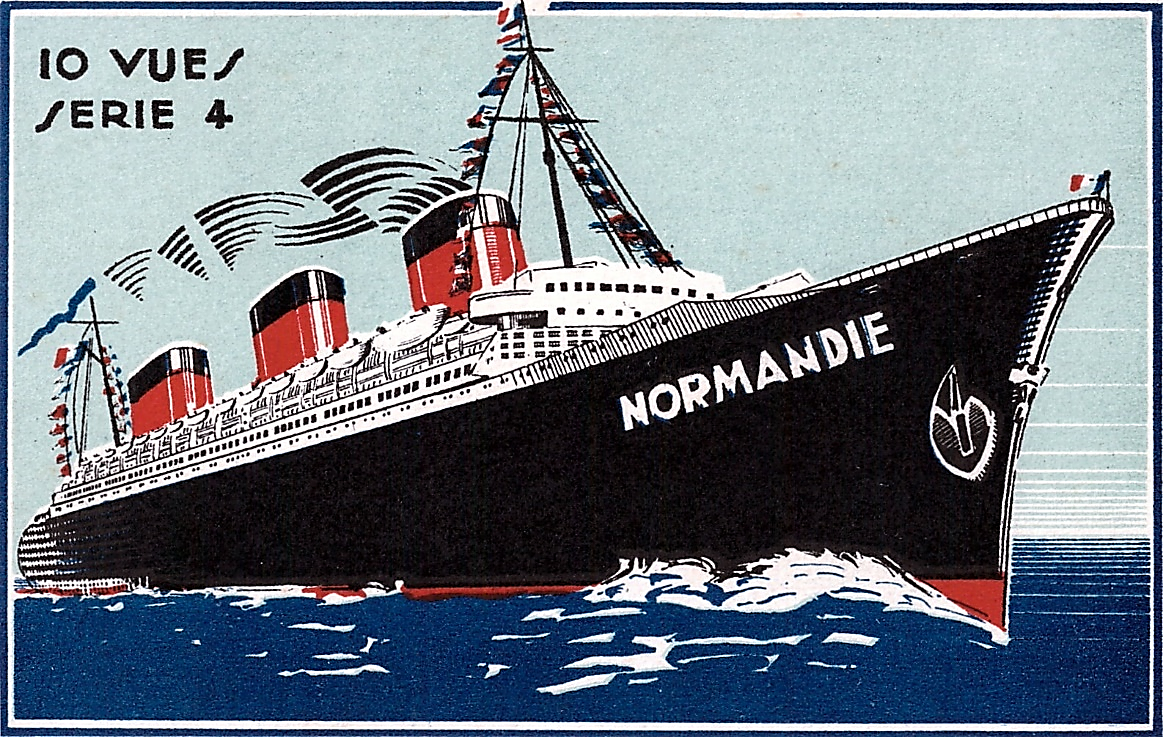
Maiden Voyage
The French Line did not want the Normandie floating in her mooring indefinitely and so held a period of celebrations on board. For three days, the Normandie hosted dinners, galas and parties for over 1000 guests. The ship and her grandeur were heavily publicized by local, national and international press.
On the 29 May 1935 at 5 p.m., the Normandie departed for her maiden voyage, crossing the English Channel to Southampton. As passengers looked around the ship they must have been impressed by the amount of space allocated to the decks and the passenger accommodation.
SS Normandie Interiors
The First Class Dining Room illustrated the spaciousness of the ship. This room was 305 feet long and 45 feet wide with a coffered ceiling 26 feet high. It provided space for 150 tables with places for all First Class passengers so that dinner could be served at 8 p.m. together at one sitting.
After dinner guests could go to the ship’s theatre to be entertained. She set the precedent in which modern cruise liners routinely provide entertainment and cabarets. The Normandie was the first ocean liner to accommodate entertainment in this way. The theatre doubled up as a live stage as well as a cinema.
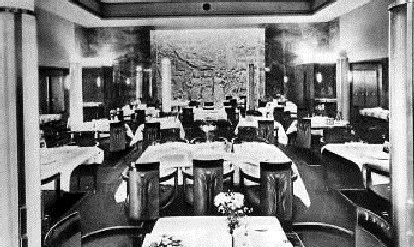

The Café Grill opened on the 1 June 1935 and offered an À La Carte restaurant, night-club and bar. It was a very popular venue for passengers wanting to carry on their night life after the theatre. It remained open until early in the morning.

The Normandie was internationally renowned for its spacious accommodation and variety of facilities as the following photographs show. She could berth a total of 1,972 passengers: 864 First Class (Cabin Class), 654 Second Class (Tourism Class), and 454 Third Class passengers.
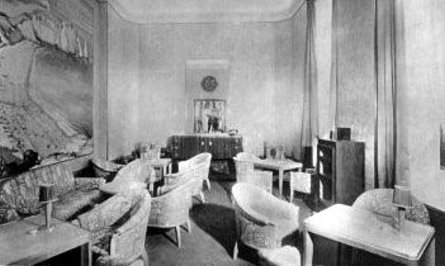
As well as the usual dining room, saloons, and shops, there was a winter garden on the Promenade Deck. It had fountains and live exotic birds. The library boasted over 5000 books. There was also the largest swimming pool ever built in an ocean liner.

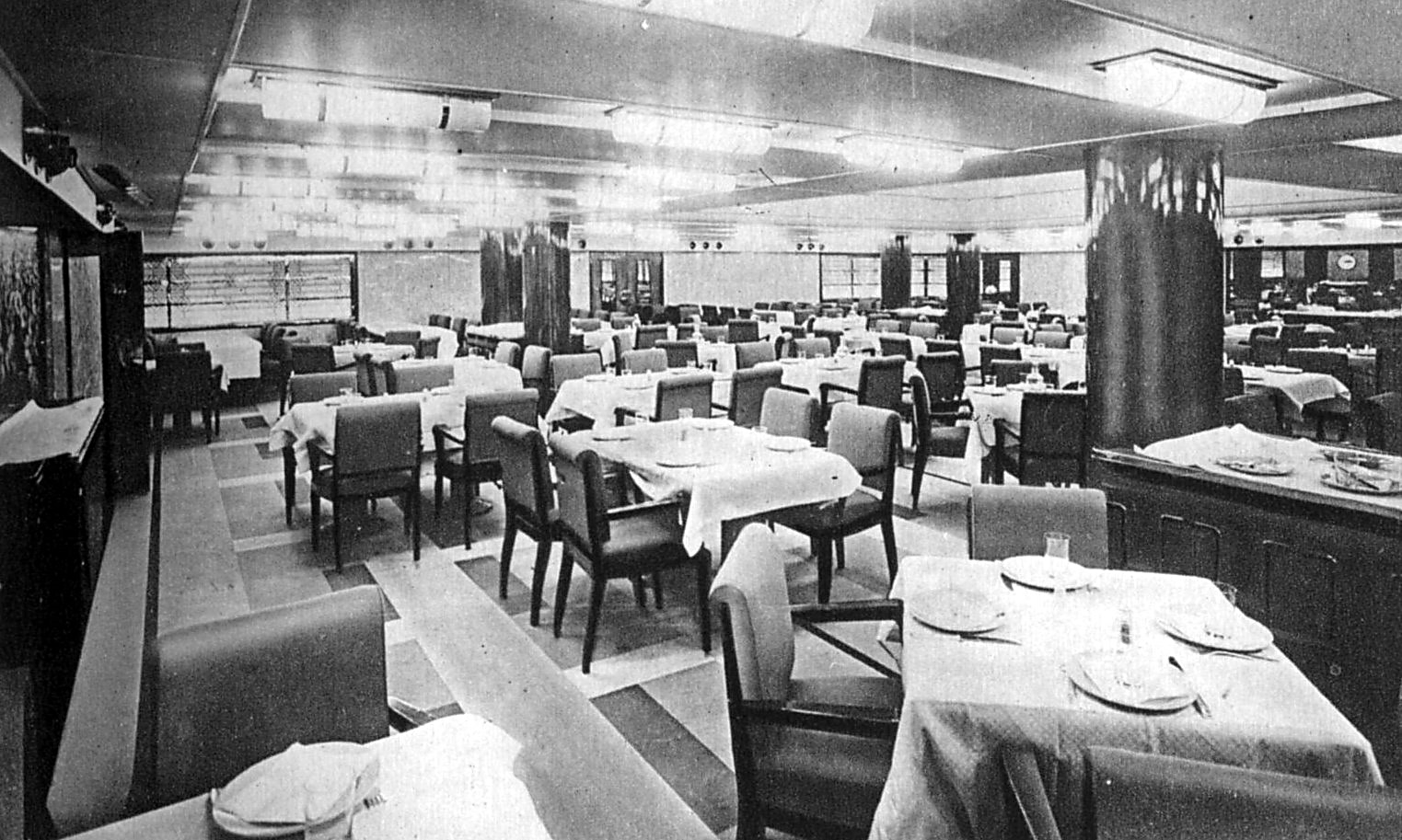
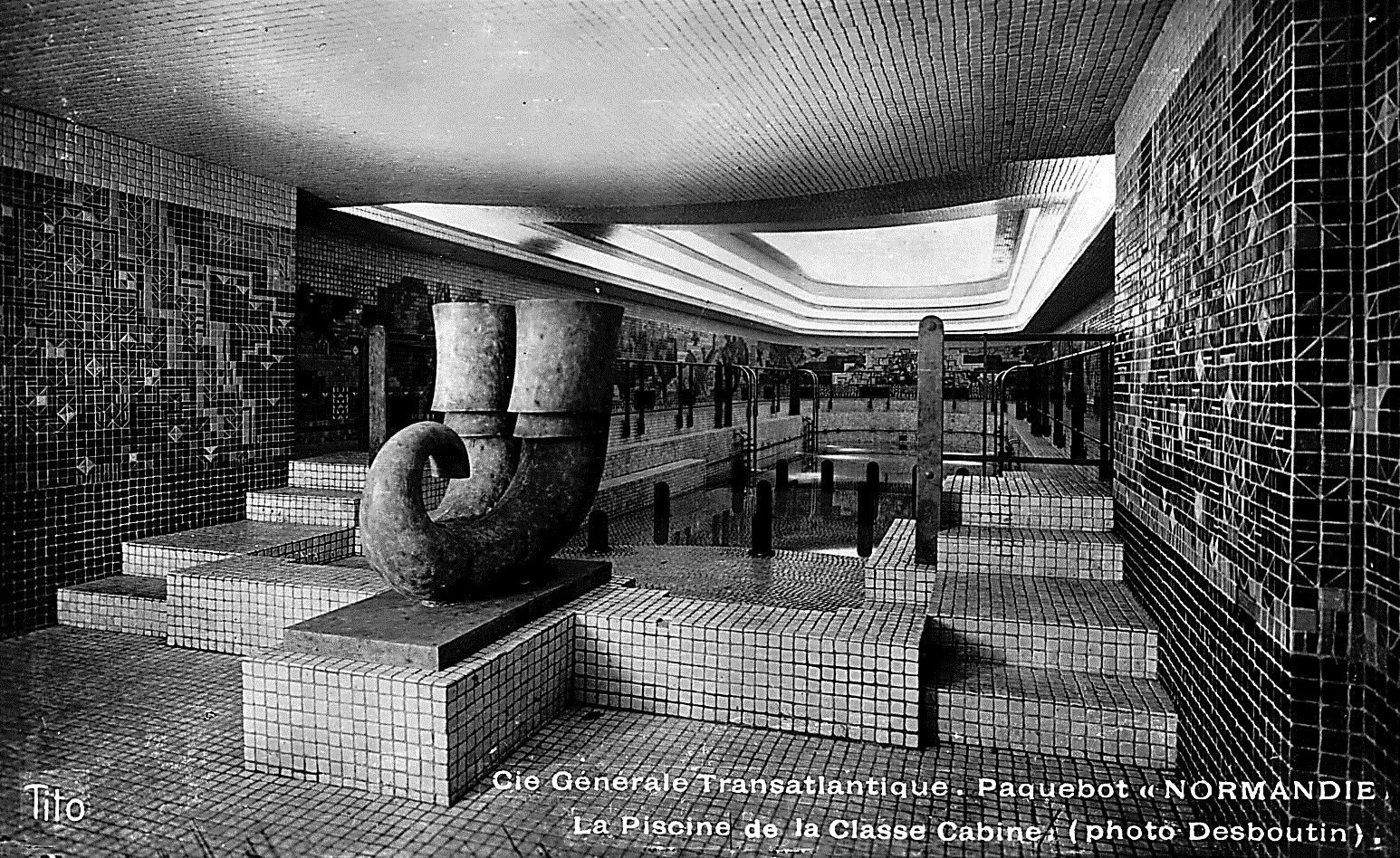

Career of SS Normandie
On 2 June 1934, the Normandie approached the Ambrose Lighthouse (often called Ambrose Tower) which marked the end of the Atlantic crossing. She had crossed 3000 miles in just four days, three hours and two minutes at an impressive average speed of 30 knots.
On her return journey, she captured the Blue Riband.
For the next four years, there was a battle between the RMS Queen Mary and the Normandie in capturing the Blue Riband.
The Outbreak of the Second World War interrupted the service of many American, British and European transatlantic crossings. The “Queens” and the Normandie were moored together on their respective piers in New York for a period of three weeks. The RMS Queen Elizabeth joined the Queen Mary and the Normandie in March 1940.

The Normandie was requisitioned by the US Navy following the invasion of Pearl Harbor. As early as December 1941, she began to be refurbished as a troopship and to be renamed Lafayette. Her lavish interiors were stripped and stored in a warehouse in New York.
Her refurbishment proved to be a disaster when a fire started which grerw out of control and the ship capsized in New York Harbour.
